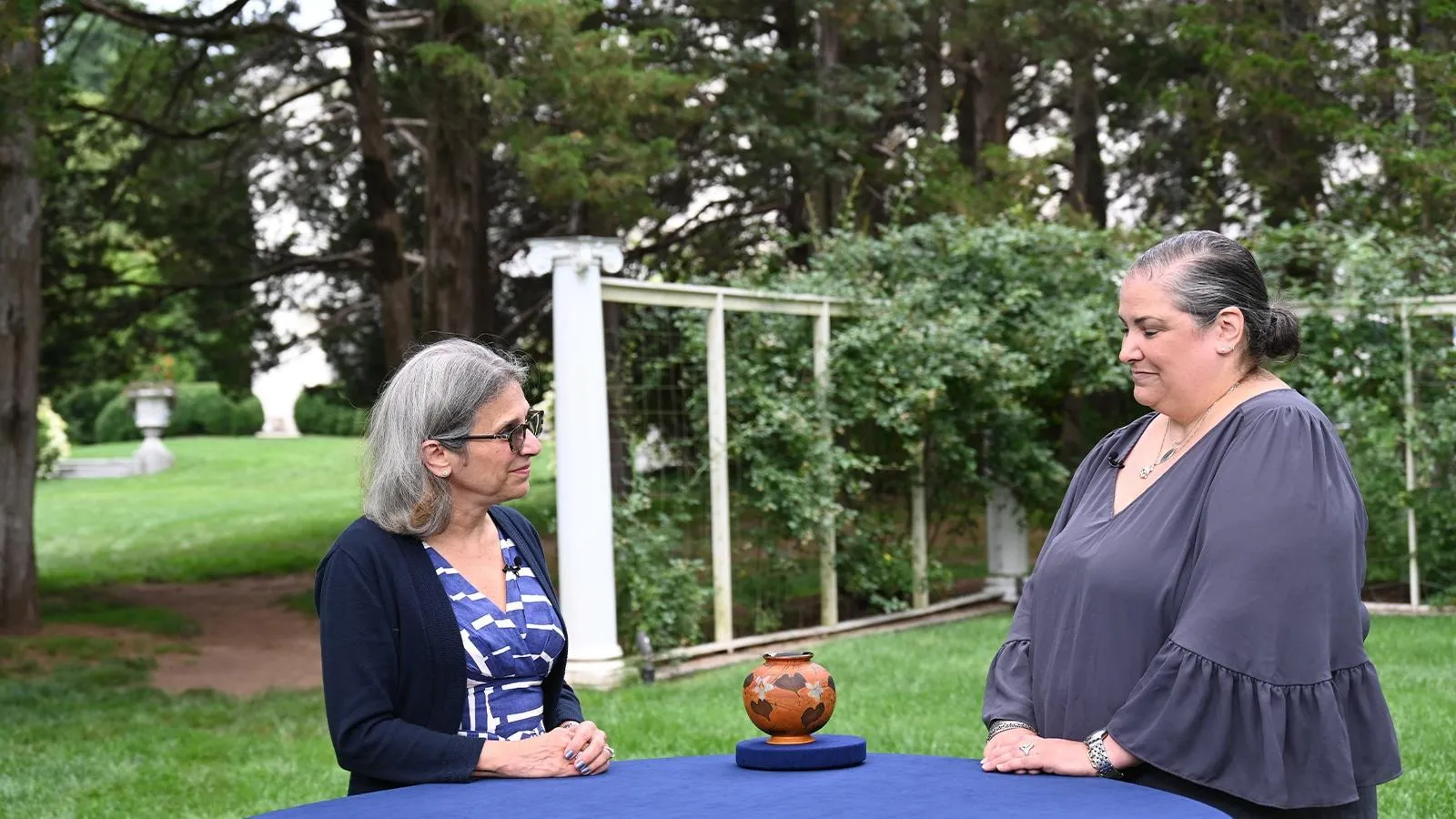GUEST: It is a tribal war club from an island in the Pacific. It's been in my family for generation after generation.
APPRAISER: Was there a tradition eh with your um family of sailing to the Pacific? Were there some whaling people?
GUEST: Yes. We come from a family of whalers.
APPRAISER: Whalers.
GUEST: Yes, I believe that the tribal members would trade with the whalers when they came through, and that's how we actually acquired it.
APPRAISER: It is a war club. It's also a badge of high status for a warrior. It's from the Marquesas Islands in the Pacific. And it's made out of ironwood, or casuarina wood, which is extremely hard and dense, and after they'd carved it, they would put it in the taro fields until it went black. This could take a long time, and then they would polish it with coconut oil. It's also called an U'u, and the features are all similar, but no two are alike.
GUEST: Okay.
APPRAISER: And the marks that you find on it, these here, quite often replicate the tattoos that they would have on their bodies. And they would have um animals, birds, lizards, and they would relate to their clans or their tribes-- it doesn't have any of the animals or birds and things on here. But the carving is still very fine and really beautiful. I think the club was made early 19th century. The head, in Polynesia, is also considered really important, the human head, and this also is interesting. This is the head shape. And you even have small heads where the eyes are, and the radiations going out. And this motif comes up all over the place. On the bottom, usually, they would have had some binding there, coconut fiber binding, with some hair. Would have been dog hair or human hair, even. I don't see any traces of it down there. Perhaps it didn't. Warfare was very central to the men in the Marquesas Islands, and they frequently had battles. But interesting enough, most of them were pre-organized. Marquesas clubs nearly all between four-and-a-half and five feet long. There are early drawings of these where the men are sort of standing around talking, and it's under their arm. They sit around and they talk with this thing. So on the one hand, it's their weapon of war.
GUEST: Right.
APPRAISER: On the other, it's this highly-prized status symbol. It's definitely had some damage here.
GUEST: Yes.
APPRAISER: I'll just turn it over so that you can see, on the other side, where it's had a big chunk here.
GUEST: Hm.
APPRAISER: I don't know whether that was done in battle, or just, one of your members just dropped it one evening.
GUEST: We like to tell the story that it was done in battle.
APPRAISER: Right.
GUEST: Which, my five-year-old was quite impressed.
APPRAISER: A bump from this would certainly bring the color to your cheeks. I mean, this is a serious piece of wood. This is an icon in Polynesian art. Some of them have much bigger heads. This is sort of just a normal club, and the condition does detract from the value. I think a conservative retail price would be between $30,000 and $40,000.
GUEST: Oh, that's, that's pretty up there.
APPRAISER: Right, I mean...
GUEST: I would never have guessed that.
APPRAISER: They have made $120,000, and things like this. But these are ones with significant provenance, some with a much bigger head, and some with more animals or something like that, or clan marks on them.



